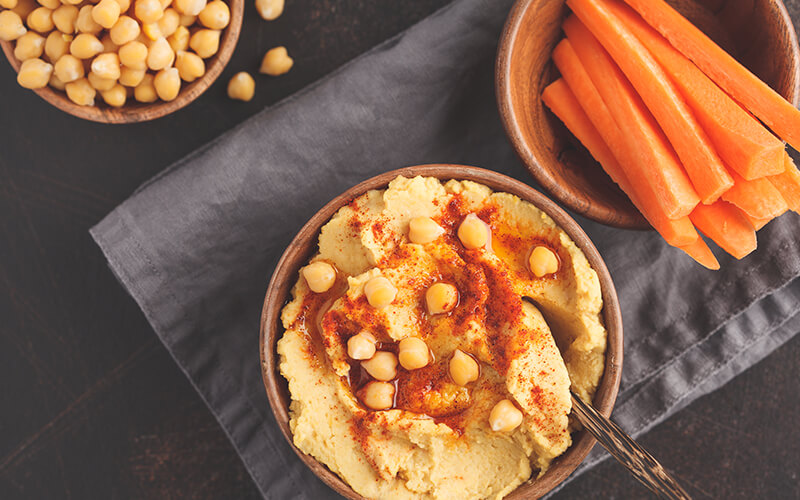Kcal’s Director of Nutrition, Lauren Jacobsen shares all the inspiration you’ll need for creating tasty and nutritious back-to-school lunchboxes that your kids will love.
For parents creating back-to-school lunchboxes, what food groups should each packed lunch contain?
Lunches should contain a variety of healthy fresh foods including all macros – protein, carbs and healthy fats. It’s important to provide a balance of all food groups – protein is necessary for growing muscles, whole carbs for lasting energy and good fats for brain development. Choose foods close to their natural state – fresh foods provide sources of vitamins, minerals and phytonutrients that are essential to a child’s growth and development. Consider building lunches and meal plans from the following: carb sources such as vegetables, fruits, legumes, beans and whole grains; proteins such as fish, poultry, lean meat, eggs, cheese and yoghurt; and fats from nuts, nut butters, seeds, avocados, whole eggs and fatty fish.
How many drinks should parents be sending their children to school with, and what type of drinks?
The recommend liquid intake for children ranges from 1 to 2 liters per day depending on age, activity levels and their metabolism. It’s important to choose beverages that are fresh and not processed. Water is best – zero calories, helps with digestion and keeps them hydrated in the Dubai heat. If water is just not that appealing to your little ones, mixing water with a bit of fresh fruit juice provides some flavour without all the calories and sugar. Infused water is also a good option – infusing water with cucumber slices, citrus slices, pomegranate, mint or even sliced strawberries provides a refreshing and light beverage. Also including water-filled foods in lunches can also help with hydration – veggie sticks and melon cubes for example.
Why should parents avoid packing highly-processed, sugary snacks and drinks in their children’s lunchbox?
Processed foods do not provide any nutritional value. Highly processed sugary foods can send kids on a sugar high; this sugar high is short-lived and subsequently followed by a sugar crash and craving for more sugar. Every time sugar is eaten – the hormone insulin is released. Insulin picks up sugar in the blood stream and packages if for storage – muscles for short-term use or in fat for long-term use. If too much sugar is eaten, and your child is not getting enough activity the result will be more being stored than used!
Removing sugary snacks and replacing with more nutritionally dense foods will provide longer lasting energy, plus provide more of what they need as a growing child – vitamins, minerals, fiber and nutrients. Pay attention to what you buy – many ‘so called’ healthy foods and snack items contain added sugar. Be sure to read the label. Consider removing foods such as energy or granola bars, boxed cereals, juice boxes and even fruit bottom yoghurt. There are better alternatives.
Why is a good, nutritious breakfast an important start to a child’s day, and what types of foods should children be eating at breakfast?
A nutritious breakfast helps ensure your child has enough energy to get their day started. After a night of sleep – all the nutrients eaten during the previous day were used to help with recovery and repair of the body. Breakfast should include some protein and some carbs. Overnight oats pudding made with oatmeal, chia seeds, some almond milk, berries and some nut butter is a delicious, nutritious and filling breakfast. Non-fat, plain Greek yoghurt, blended with a bit of honey and vanilla, along with some fresh berries, nuts and seeds or low sugar granola is another great option. Want savoury instead – why not eggs? Scrambled and stuffed into a small whole grain pita with some mild salsa and cheddar.
What smart snacks would you recommend for children throughout the school day?
Fruit is a great option – a chopped apple, melon or banana pieces. Serve it with a yoghurt dip – blend with roasted almond butter and honey. Veggie sticks with hummus is also good, providing some protein from chickpeas. Make your own energy bars or bites using nuts, seeds and dried fruits or homemade trial mix made with toasted coconut, dried cranberries, pecans and sunflower seeds. Cheese sticks with seedless grapes. Mini pizzas made on whole wheat pitas and cut into triangles.
For parents with particularly picky eaters, in what ways can the parent help a child to broaden their eating habits?
Involve your kids in food prep – give them choice. Provide a few healthy options they can choose for inclusion in meals. Maybe it’s a fruit for their smoothie, or a veggie for their dinner. Lead by example – eat with your child so they can see you’re eating the same foods as them.
Additionally, you can also sneak more healthy foods into some of their favorite foods. Blending veggies like carrots into tomato sauce, and serving over zoodles – zucchini noodles. Creating vegetable mashes using potato with carrot or peas is a good lower calorie side dish. Create healthy smoothies using veggies such as spinach with banana and mango. Healthy juices can be created using half vegetable and half fruit – orange and beet or spinach, kiwi and apple. Veggie sticks with yummy colourful dips – hummus blended with sundried tomato or basil, mashed avocado, or yoghurt dips blended with healthy nut butters. You can even add healthy ingredients to sweet desserts – black bean brownies or pumpkin cookies.
What meal options does Kcal offer for children?
We have a small selection of kids’ meals including chicken nuggets breaded in coconut and almond flour and served with homemade BBQ sauce; mini chicken quesadillas made with chicken breast, cheddar, red peppers and mild tomato salsa stuffed in a whole wheat tortilla and lastly a spaghetti bolognese with whole wheat spaghetti and a tomato-carrot sauce with minced beef. We also have kid friendly juice blends, smoothies and healthy desserts.
For more information, visit kcallife.com




